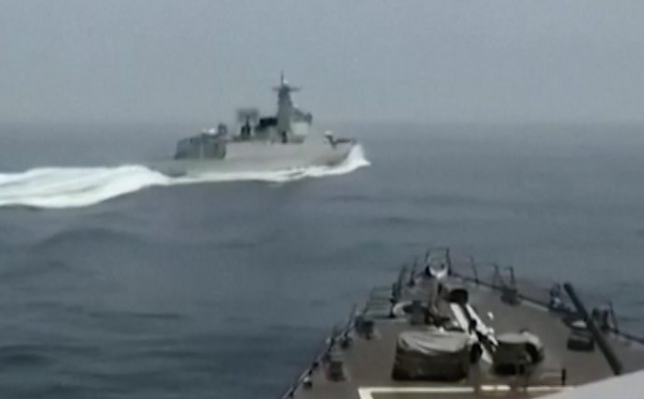Doksuri has roared to super typhoon strength with winds of 240km/h (149mph) and is headed to waters that separate Taiwan and the Philippines.
The annual Han Kuang drills that started Monday tests Taiwan’s defence in case of an attack from China.
It is unclear if the rest of the five-day-long exercise will be disrupted.
Typhoons are common in the western Pacific at this time of the year, but none have hit the island directly since 2019. Taiwan is projected to feel the impact of the super storm on Wednesday and Thursday.
Taiwan’s weather bureau has issued warnings for strong winds and heavy rains. In the southern port city of Kaohsiung, authorities had made haste to round up containers on the sea.
“I’d like to remind citizens not to underestimate the typhoon threats,” Taiwan’s premier Chen Chien-jen said in a statement posted online.
In the Philippines, schools and offices have shut in the northern province of Cagayan as Doksuri moved closer. The flood-prone province is home to 1.2m people.
Climates scientists have long warned that global warming will increase the intensity and frequency of storms.
Later this week, Doksuri is expected to head to southern China, which is still reeling from typhoon Talim earlier this month.
Chinese military rehearses encirclement of Taiwan
China aircraft carrier ‘seals off’ Taiwan in drill
How China calibrates its Taiwan response
This year’s Han Kuang will see Taiwan simulating its response to an attack on its main airport and a China-led blockade. It is one of the biggest yet since the drills started in 1984.
Taiwan regards itself as a self-ruled island, distinct from mainland China, with its own laws and democratically elected leader.
However, China sees island as a breakaway province that will eventually be brought back under Beijing’s control, by force if necessary.







 Finance
Finance







